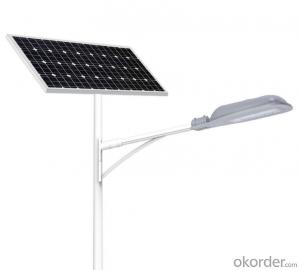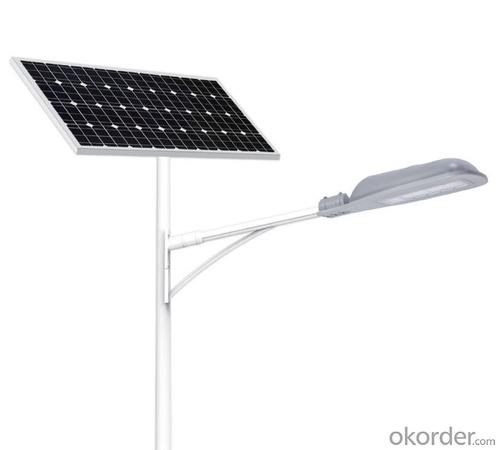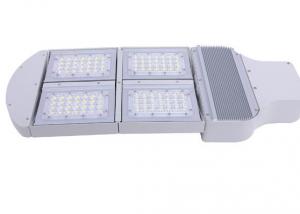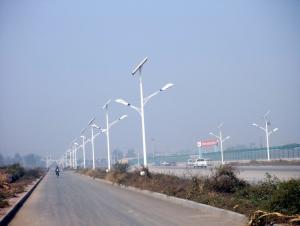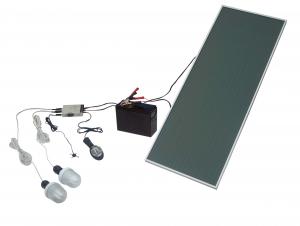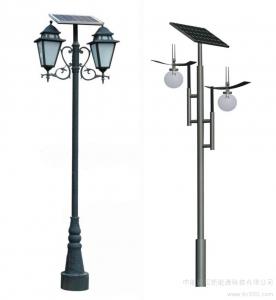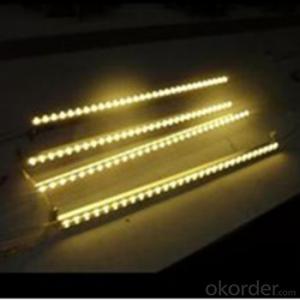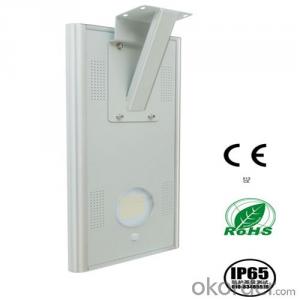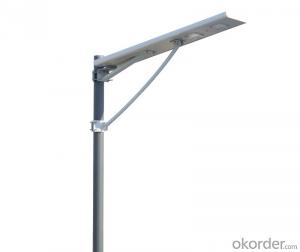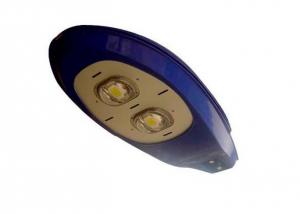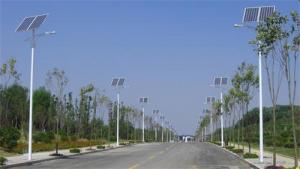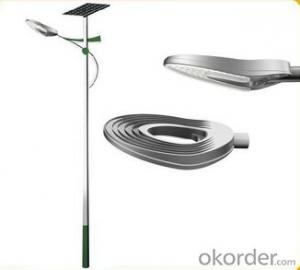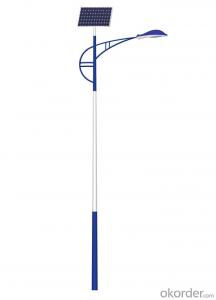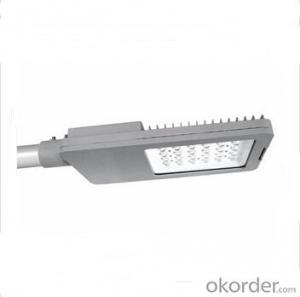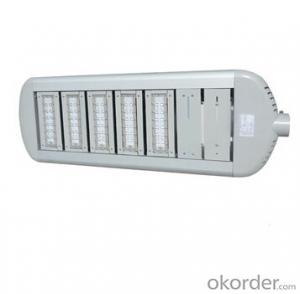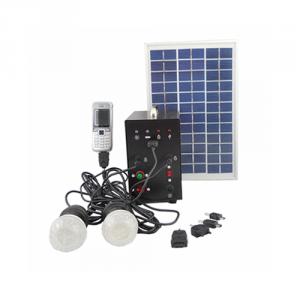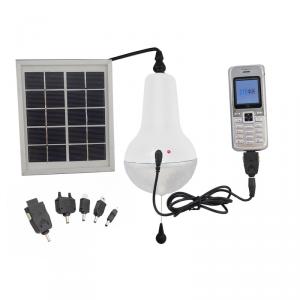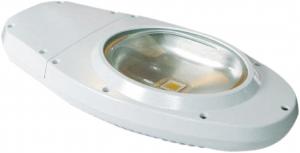Outdoor Solar Light Tree - 30W Two Parts Type Compact Series Solar Street Light
- Loading Port:
- Shanghai
- Payment Terms:
- TT OR LC
- Min Order Qty:
- 20 set
- Supply Capability:
- 1000 set/month
OKorder Service Pledge
OKorder Financial Service
You Might Also Like
1. Description of compact series solar street light 30W
Compact series solar street light is also called two parts solar street light. It combines the solar battery and the lamp t in the aluminum lamp holder box,helps prevent the battery from be stolen compared to the common splite type solar street light.
2. Features of the compact series solar street light 30W
·Pantented lens baturing type light distribution
·Make the light distribution more uniforn
·Beautiful look comfortable and elegant
·Easy to fit a variety of outdoor environments
3. Two type of installations
Type 1:

Type 2:

4. Specifications of compact series solar street light 30w
| Model | KY-XY.TYN-001-A.030 | KY-XY.TYN-003-A.030 | KY-XY.TYN-004-A.030 |
| Rated power | 30W | 30W | 30W |
| Input voltage | DC36V | DC36V | DC36V |
| Lithium battery | 32650 Lithium battery 3.2V/65AH | 32650 Lithium battery 12.8V/16AH | 32650 Lithium battery 12.8V/16AH |
| Solar panel | Mono 5V / 62W (600X670mm) | Poly 18V/60W (650X670mm) | Poly 18V/60W (650X670mm) |
| Chip Type | Bridgelux 3030 | Bridgelux 3030 | Bridgelux 3030 |
| LED light source | Bat-wing type (150°X75°) | Bat-wing type (150°X75°) | Bat-wing type (150°X75°) |
| Efficiency | 160LM/W | 158LM/W | 160LM/W |
| Color temperature (K) | 3000K/4000K/5000K/5700K | 3000K/4000K/5000K/5700K | 3000K/4000K/5000K/5700K |
| Color rendering index | ≥Ra70 | ≥Ra70 | ≥Ra70 |
| IP rate | IP65 | IP66 | IP66 |
| IK rate | IK08 | IK08 | IK08 |
| Working temperature | -10°C ~ + 60°C | -10°C ~ + 60°C | -10°C ~ + 60°C |
| Working humidity | 10% - 90% | 10% - 90% | 10% - 90% |
| LED lifespan | >50000H | >50000H | >50000H |
| Installation diameter | φ50mm | φ50mm | φ50mm |
| Dimension | 585X260X106mm | 585X260X106mm | 585X260X106mm |
| Installation height | 5m/6m | 5m/6m | 5m/6m |
5. Configuration
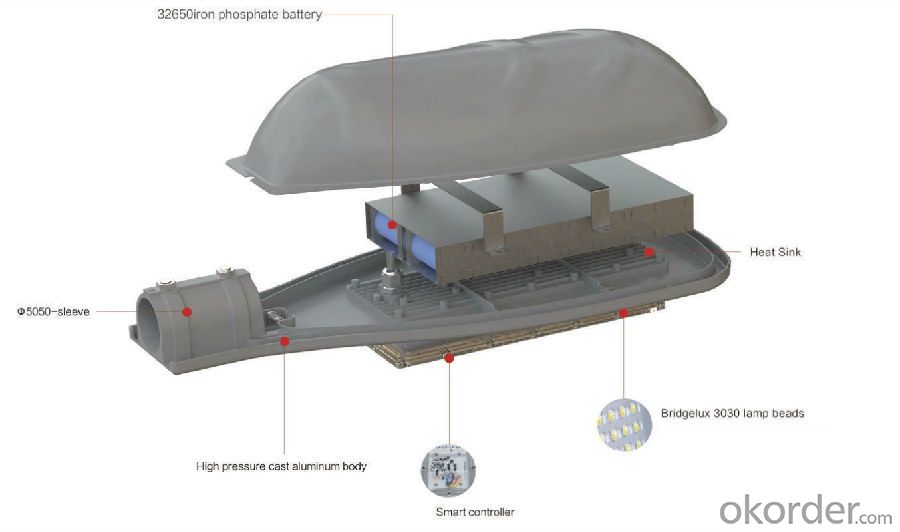
6. Package

- Q: How do you troubleshoot solar lights that are not working?
- When troubleshooting solar lights that are not working, there are a few steps you can take. Firstly, check whether the solar panels are receiving direct sunlight as shade can affect their ability to charge. Clean the solar panels to ensure they are free from dust or debris, as this can also hinder their performance. Next, inspect the batteries and make sure they are properly connected and not corroded. Replace the batteries if necessary. Additionally, check the wiring connections to ensure they are secure and undamaged. If all else fails, contact the manufacturer or consult a professional for further assistance.
- Q: Can solar lights be used for outdoor wedding lighting?
- Indeed, outdoor wedding lighting can certainly utilize solar lights. In fact, they present an exquisite option for imbuing your wedding venue with elegance and ambiance. Solar lights are effortlessly installed without the need for any wiring, making them highly convenient for outdoor events. Additionally, they possess energy efficiency and eco-friendliness, harnessing solar power to produce light. A variety of styles and designs are available for solar lights, including string lights, lanterns, and pathway lights, enabling you to craft your desired wedding atmosphere. Whether you desire to line the walkway, illuminate the reception area, or adorn the trees, solar lights offer a breathtaking and enchanting lighting solution for your outdoor wedding.
- Q: Can solar lights be used for outdoor sports stadiums?
- Definitely, outdoor sports stadiums can indeed utilize solar lights. Solar lights present an excellent alternative to traditional electrical lighting systems, as they are powered by sunlight, making them both energy-efficient and environmentally friendly. They can be conveniently installed in various areas of the stadium, such as the field, stands, parking lots, and walkways. Typically, solar lights consist of a solar panel that absorbs sunlight and converts it into electricity. They also contain a rechargeable battery to store this energy. The stored energy is then used to power the lights during the night or when there is insufficient sunlight. These lights provide bright and efficient illumination, ensuring the safety and visibility of players, spectators, and staff in the stadium. Furthermore, solar lights offer numerous advantages for outdoor sports stadiums. Firstly, they reduce energy costs by eliminating the reliance on expensive grid electricity. Secondly, they have low maintenance requirements due to their simple wiring systems, which reduces the need for frequent repairs and replacements. Additionally, solar lights are not affected by power outages, ensuring uninterrupted lighting during events. Moreover, solar lights contribute to sustainability efforts by reducing the stadium's carbon footprint. By utilizing renewable energy, they help to decrease greenhouse gas emissions and promote a cleaner environment. This aligns with the current trend of incorporating eco-friendly practices in sports facilities. In conclusion, solar lights are a practical and efficient option for outdoor sports stadiums. They offer cost savings, low maintenance, and environmental benefits, making them a viable choice for illuminating these vast and often energy-demanding spaces.
- Q: Are solar lights compatible with dimmer switches?
- No, solar lights are not compatible with dimmer switches. Solar lights are designed to automatically turn on and off based on the available sunlight, and they do not have the capability to be dimmed.
- Q: What are the components of the solar street light
- battery is generally placed in the ground or there will be a special battery incubator, can be used VRLA batteries, colloidal batteries, Iron-aluminum batteries or lithium batteries. Solar lamps are fully automatic and do not require trenching, but the poles need to be mounted on the embedded parts (concrete base).
- Q: Are there solar lights for outdoor horse arenas or riding arenas?
- Yes, there are solar lights available specifically designed for outdoor horse arenas or riding arenas. These solar lights provide reliable and sustainable lighting solutions, allowing for safe and well-lit riding conditions during the night or in low-light situations without the need for electricity.
- Q: Can solar lights be used for sports fields and stadiums?
- Yes, solar lights can be used for sports fields and stadiums. They are an energy-efficient and sustainable lighting solution that can provide adequate illumination for outdoor sports activities. Solar lights are not only cost-effective but also environmentally friendly, making them a popular choice for sporting venues.
- Q: Can solar lights be used on camping trips or RVs?
- Certainly! Solar lights are definitely suitable for camping trips or RVs. They are highly favored by campers and RV enthusiasts due to their convenience, eco-friendliness, and cost-effectiveness. The energy of solar lights is derived from the sun, eliminating the need for electricity or batteries. This feature makes them ideal for outdoor activities like camping, where access to a power source may be limited. Simply position the solar lights in a location where they can receive direct sunlight during the day, and they will automatically charge up. Various types of solar lights are available for camping trips or RVs, depending on your specific requirements. For instance, solar lanterns can be hung inside your tent or RV, creating a cozy and well-illuminated environment. Solar-powered string lights are also popular for adding a festive ambiance to your campsite. Moreover, solar lights are highly portable and lightweight, making them effortless to carry and install wherever you go. They are typically designed to withstand various weather conditions, ensuring they won't be damaged outdoors. Additionally, many solar lights offer adjustable settings, allowing you to control brightness or switch between different lighting modes. Utilizing solar lights on camping trips or RVs not only offers practicality but also promotes environmental friendliness. By harnessing solar power, you reduce reliance on traditional energy sources, resulting in a decreased carbon footprint. This sustainable and renewable method enables you to illuminate your campsite without contributing to pollution or depleting natural resources. To conclude, solar lights are an excellent choice for camping trips or RVs. They provide convenience, cost savings, and eco-friendliness while offering ample lighting for your outdoor adventures. So, whether you're camping in the wilderness or enjoying the comforts of your RV, solar lights are a valuable addition to enhance your overall experience.
- Q: Are there solar lights for bicycles or motorcycles?
- Yes, there are solar lights available for bicycles and motorcycles. These lights are designed to be powered by solar energy, making them a sustainable and convenient option for enhancing visibility and safety while riding.
- Q: Are solar lights suitable for outdoor concert venues or stadiums?
- Yes, solar lights are suitable for outdoor concert venues or stadiums. They are a sustainable and energy-efficient lighting option that can be easily installed in outdoor areas. Solar lights can provide ample illumination during evening events, reducing the reliance on traditional electricity sources and minimizing operational costs. Additionally, solar lights are low-maintenance and can withstand various weather conditions, making them a practical choice for outdoor venues.
Send your message to us
Outdoor Solar Light Tree - 30W Two Parts Type Compact Series Solar Street Light
- Loading Port:
- Shanghai
- Payment Terms:
- TT OR LC
- Min Order Qty:
- 20 set
- Supply Capability:
- 1000 set/month
OKorder Service Pledge
OKorder Financial Service
Similar products
Hot products
Hot Searches
Related keywords
